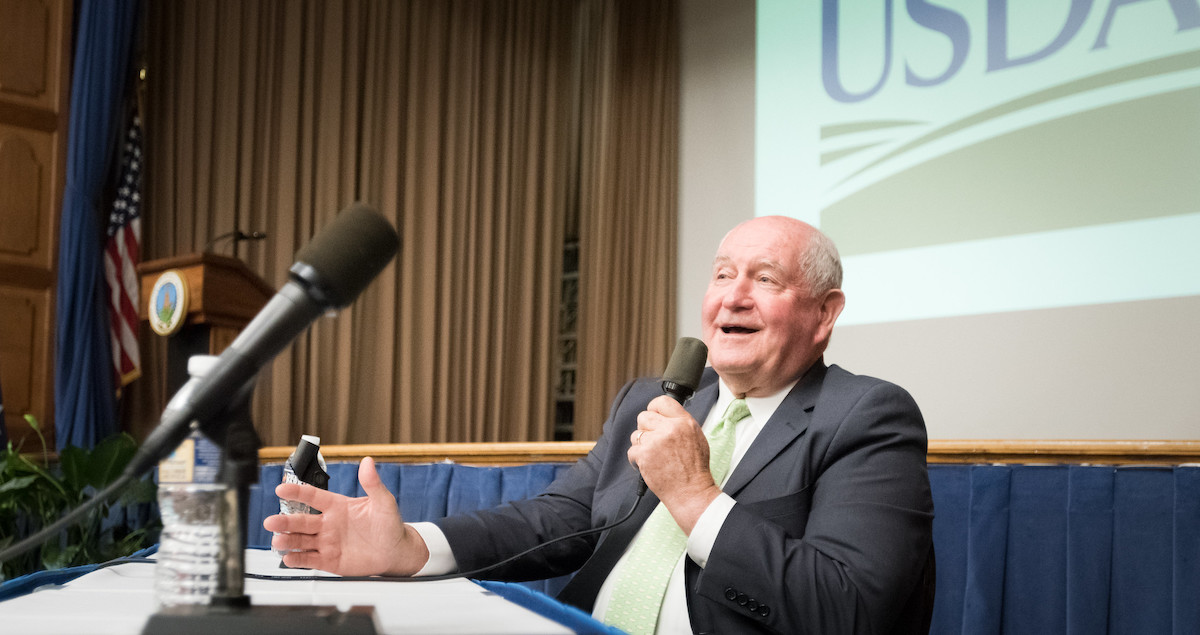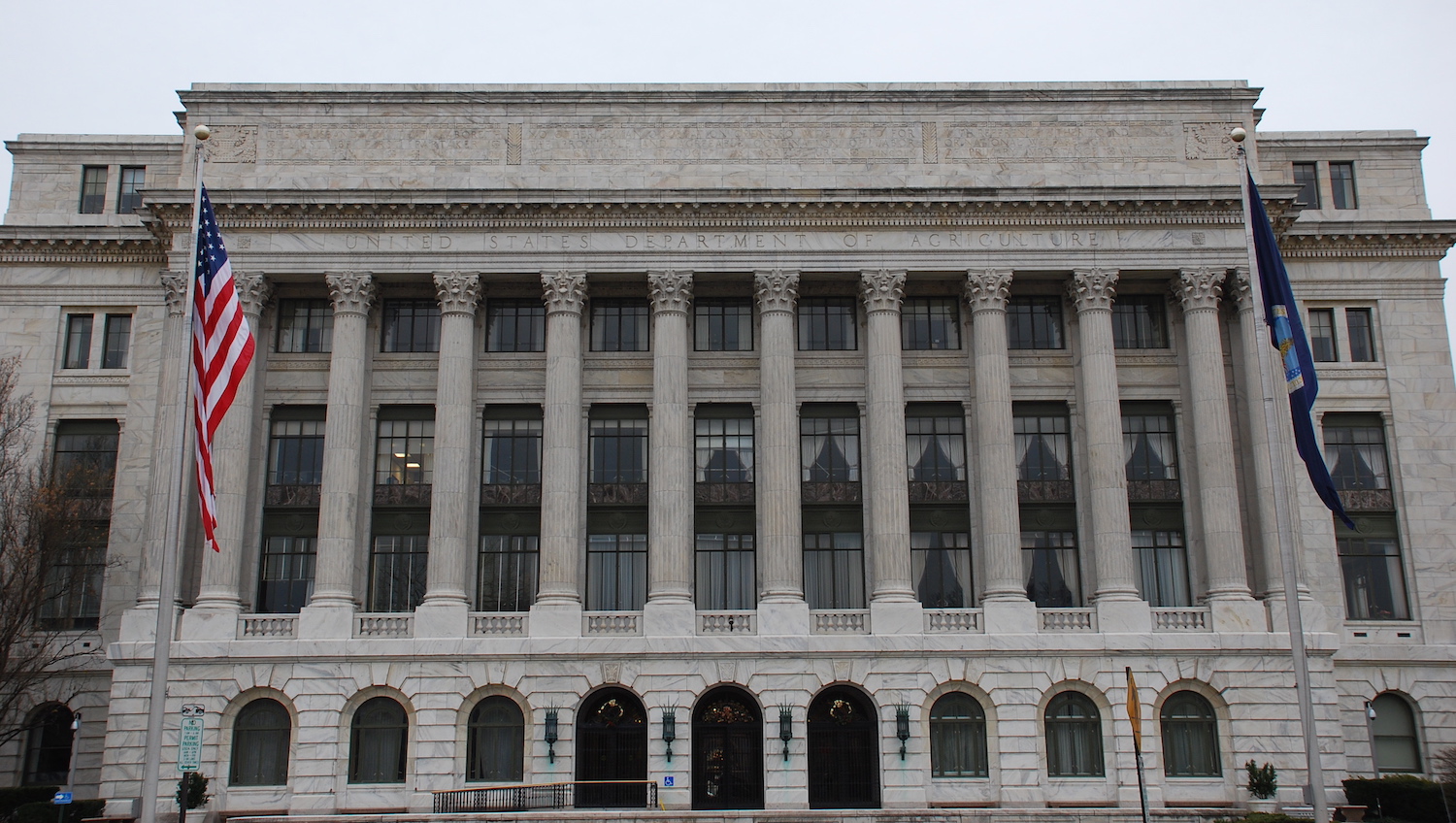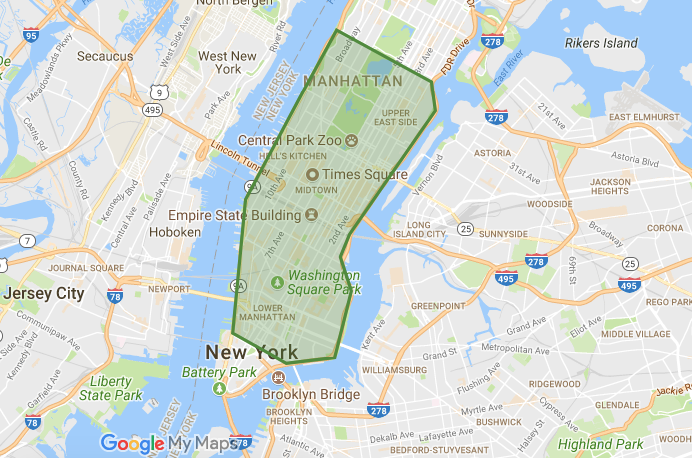After a 10-month-long tease, the United States Department of Agriculture (USDA) announced on Thursday that it will move two crucial research agencies, the Economic Research Service (ERS) and the National Institute of Food and Agriculture (NIFA), from the Beltway out to Kansas City.
In a morning press release, USDA Secretary Sonny Perdue said the region, which includes counties in both Kansas and Missouri, would bring the agencies closer to the department’s “customers”—that is, the farmers and agriculture businesses who depend on USDA services and research.
“The Kansas City Region provides a win win—maximizing our mission function by putting taxpayer savings into programmatic outputs and providing affordability, easy commutes, and extraordinary living for our employees,” he wrote. “The Kansas City Region will allow ERS and NIFA to increase efficiencies and effectiveness and bring important resources and manpower closer to all of our customers.”
As we’ve reported, this decision is highly controversial. Many employees suspect the move, which has already led to a loss of long-time employees, is an attempt to reduce the agencies’ stature and undermine their independence. Several ERS staffers interviewed by The New Food Economy in 2018 wondered whether their agency was bring punished for publishing research that directly contradicts the Trump administration’s messaging on food stamps, farming, climate change, and other hot-button issues. In early May, ERS employees voted to unionize, in an effort to gain leverage in relocation negotiations. This week, NIFA employees did the same.
After receiving 136 expressions of interest—submitted by various coalitions of economic development corporations, chambers of commerce, counties and cities, and universities—last month the department announced three finalists who had been selected based on criteria related to quality of life, capital and operating costs, workforce statistics, and logistics infrastructure.
The Kansas City Area Development Council (KCADC), which submitted the winning bid on behalf of the region, declined to share its expression of interest with The New Food Economy, citing privacy concerns of the many stakeholders included in the bid; the council worked with around 300 businesses, economic associations, elected officials, and universities in both states on its submission. Besides being a major farming area, Kansas City is home to companies which represent 56 percent of animal health, diagnostics, and pet food sales worldwide, according to the Kansas City Animal Health Corridor, which joined KCADC in submitting the expression of interest. The council said USDA is currently evaluating properties in Kansas and Missouri for a 120,000-square-foot office space to house both agencies and 568 employees. The goal is to be operational by the fall.
Perdue, who is scheduled to address ERS and NIFA employees this afternoon, also released a long-awaited cost-benefit analysis—which critics of the move had clamored for, looking for proof to justify the Secretary’s assertion that the move would save the government money. The department said the analysis shows savings of at least $300 million on employment costs and rent over 15 years—money that could be reallocated towards researching “critical needs like rural prosperity and agricultural competitiveness.” That phrase likely refers to the economic issues that farmers are facing due to Trump’s trade war, according to an ERS employee who requested anonymity for fear of reprisal.
According to its cost-benefit analysis, USDA plans to relocate 547 ERS and NIFA employees over a three-month period ending September 30, with 97 employees remaining in the D.C. region—a timeline that allows USDA to sidestep the possibility for Congress to block the move. Currently, Congress is considering an appropriations bill that would block the ERS and NIFA relocation, but would take effect only beginning October 1, 2019—the start of the 2020 fiscal year.
ERS research is frequently shared with members of Congress and the Congressional Budget Office, and researchers often collaborate with workers in other departments and agencies. Those possibilities would be foreclosed by the move, the employee says—requiring frequent travel to stay in touch with policymakers and lobbyists. As a result, ERS economists would instead focus their research on agricultural production—just one facet of its research mission.
Aerial view of the Kansas City region
“We have communications, meetings, discussions with the Farm Bureau, with other USDA agencies, with other farm lobbies. Once we’re out of the city, we can’t have conversations to discuss policy,” the employee said. “If independent researchers don’t have the same microphone, then that can be problematic.”
Kansas City, it should be said, already has a strong USDA presence, with over 4,000 department employees already working in the two states, which additionally boast 150 federal agencies, including a Federal Executive Board and the Kansas City Federal Reserve.. The region is also home to 13 land-grant universities, and a USDA lab that specializes in animal disease, set to open in 2022.
In its cost-benefit analysis, the department also touted the region’s “innovative network of top recruiters to represent corporations providing guidance, insight and access to area companies”—agency-speak for job opportunities for the families of relocated federal employees.
The department adds that moving to Kansas City will allow it to attract employees that have training and interest in agriculture—a new qualification for agencies historically staffed by administrators and economists.
Overall, the cost-benefit analysis found that USDA would save near $102 million on staffing costs, and $91 million on real estate costs, over a 15-year period, by moving to Kansas City. That includes a $26 million incentives package offered for real estate. It is not immediately apparent how the department reached the $300 million figure touted in its analysis.
Peter Winch, a union organizer with the American Federation of Government Employees, which represents the employees in the two agencies, says the union will continue to lobby Congress to stop the move.
Currently, there are a number of legislative options for blocking the relocations. Late last year, democratic Representative Chellie Pingree introduced a House bill to keep the agencies in Washington, D.C. More recently, a rider was attached to an appropriations bill, though it’s likely to be attacked by Republicans when the bill reaches the Senate. Just last week, Senate Democrats also introduced a bill to block the move.
“We will continue to press Congress to block this move, and will be looking at filing a demand to bargain and an information request for any cost-benefit analysis that might exist,” Winch wrote in an email to The New Food Economy.













